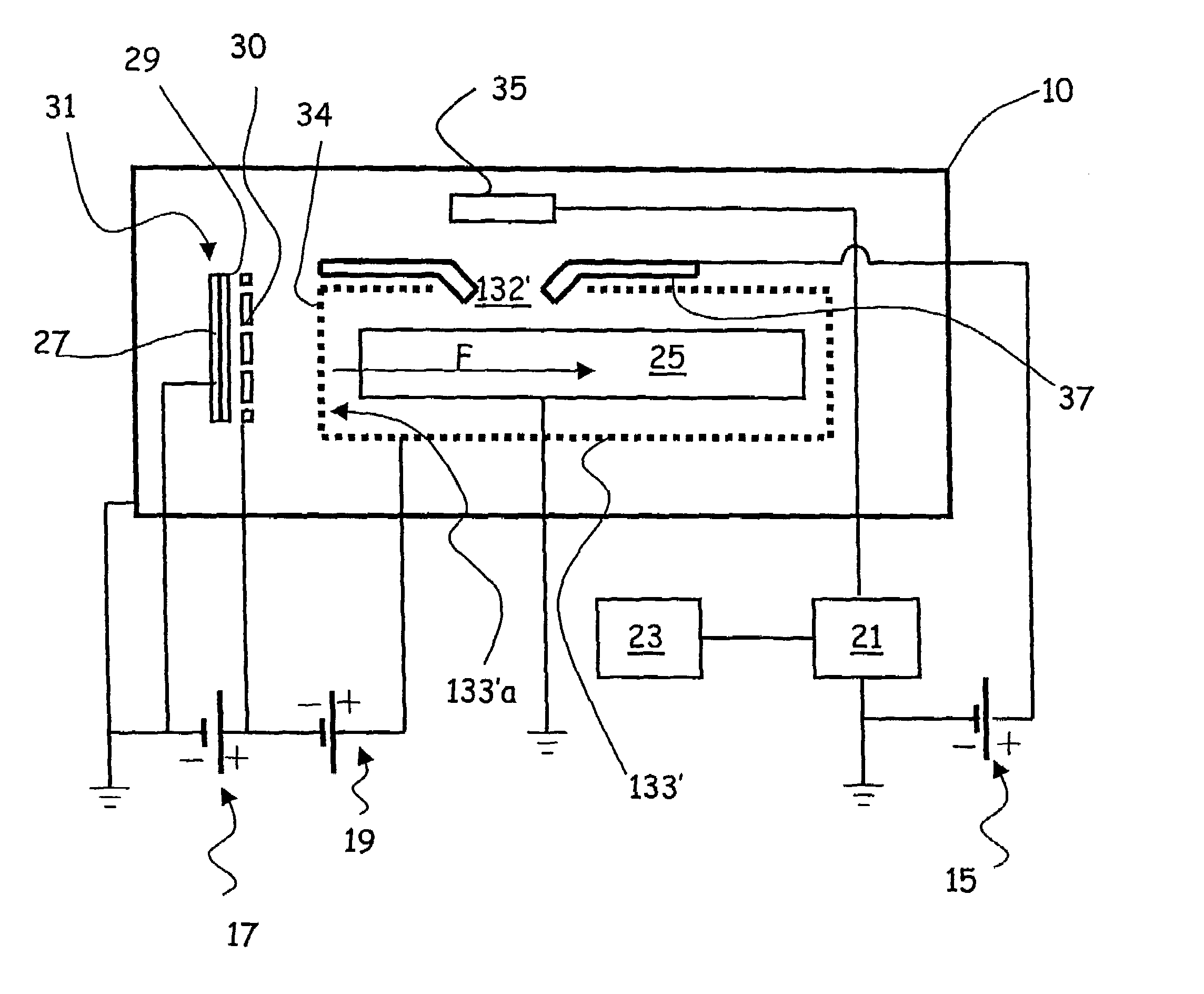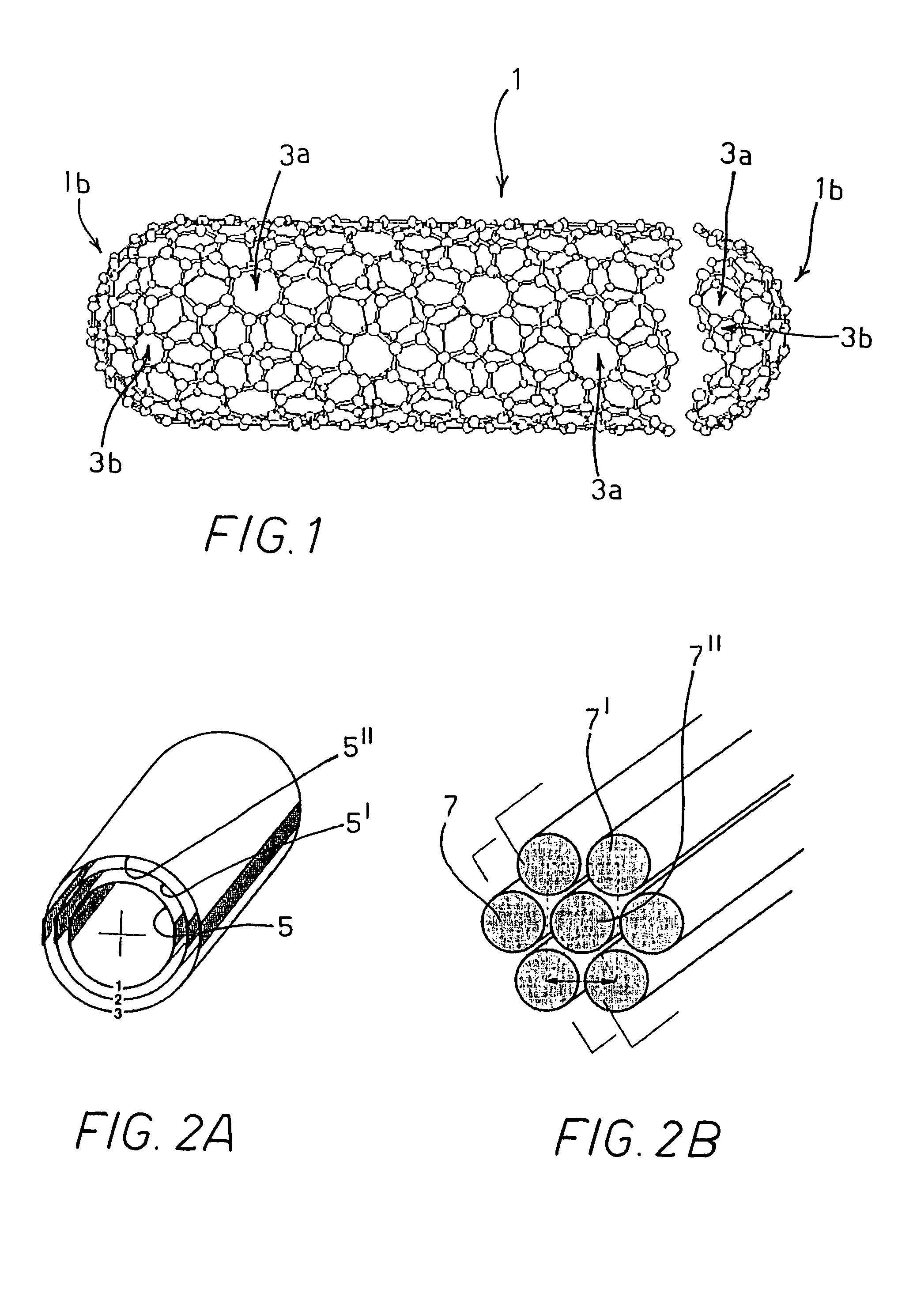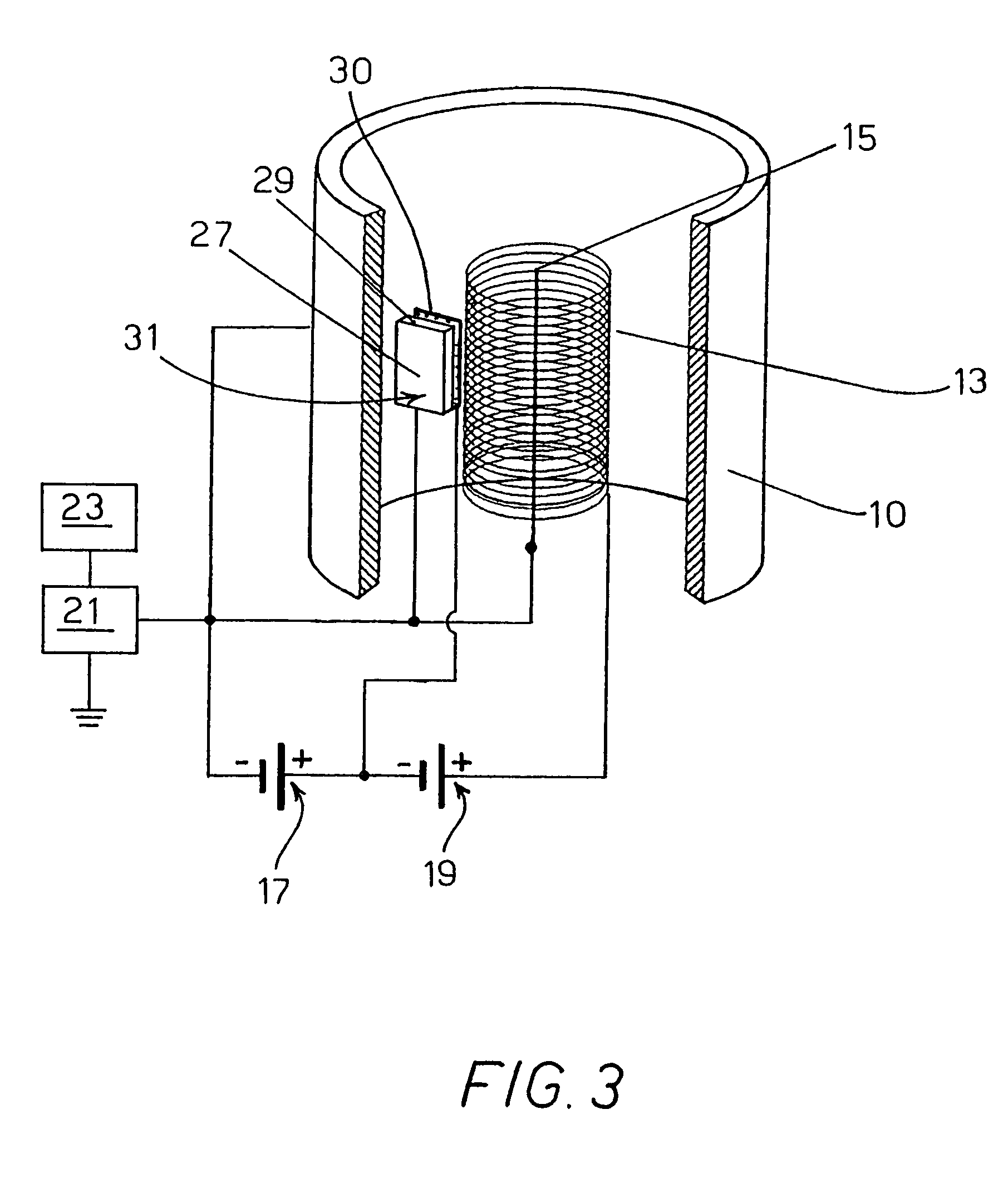Ionization vacuum gauge
a vacuum gauge and vacuum gauge technology, applied in the field of ionization vacuum gauges, can solve the problems of high power consumption, long response time, and non-negligible pollution of the surrounding environmen
- Summary
- Abstract
- Description
- Claims
- Application Information
AI Technical Summary
Benefits of technology
Problems solved by technology
Method used
Image
Examples
second embodiment
[0037]Referring to FIG. 4, there is shown the vacuum gauge according to the invention. A chamber 10 encloses the volume containing a residual gas, the pressure of which is to be measured. The vacuum gauge substantially comprises: a cathode 31 capable of emitting electrons, which cathode is formed by a nanotube film 29 arranged on a substrate 27 and is provided with an extraction grid 30; a grid-shaped anode 33, capable of accelerating the electrons emitted by cathode 31; and a plate or collecting electrode 35, which is to collect the ions produced by the electron collisions with the gas atoms or molecules.
[0038]In that embodiment, anode 33 is made as a substantially plane grid placed opposite to said cathode 31, at a short distance therefrom. Thus, the electrons emitted by cathode 31 are focussed into a beam oriented according to a preferential initial direction (denoted by arrow F), substantially perpendicular to the plane of the grid 33.
[0039]It is therefore advantageous to make p...
third embodiment
[0057]Turning now to FIG. 5, there is shown the vacuum gauge according to the invention, which differs from the previous ones in a shape of the grid-shaped anode, here denoted by reference numeral 133.
[0058]The anode 133 is made as a substantially parallelepiped cage, having a face 133a parallel to the cathode 31 and located at a short distance therefrom. Thus, the electrons emitted by cathode 31 are accelerated through the face 133a of anode 133 according to a preferential initial direction (denoted by arrow F), substantially perpendicular to the plane of said face 133a.
[0059]Collecting plate 35 is placed opposite to face 133a, in correspondence of open base 132 of grid 133.
[0060]Note that using a parallelepiped grid 133 allows for increasing the vacuum gauge sensitivity. Actually, being both plate 35 and the walls of chamber 10 grounded, the ions could be attracted by the walls rather than by plate 35, thereby creating an ion dispersion effect. Use of the parallelepiped grid 133,...
fourth embodiment
[0061]Turning now to FIG. 6, there is shown the vacuum gauge according to the invention, which differs from the previous ones in the arrangement of collecting plate 35.
[0062]In the previously disclosed embodiments, the plate 35 is placed opposite to cathode and lies in a plane substantially parallel to the cathode itself and perpendicular to preferential direction F of the electron beam.
[0063]On the contrary, in the embodiment of the vacuum gauge according to the invention shown in FIG. 6, plate 35 lies in a plane substantially perpendicular to the plane of cathode 31, and hence it is located in a plane parallel to preferential initial direction F of the electron beam. Thus, the ions and the ionised molecules attracted towards the plate 35 move towards the plate in a direction substantially perpendicular to that of the electron beam.
[0064]Thus, interactions between the electron source (cathode 31) and collecting plate 35 are limited. More particularly, the photoelectric effect on pl...
PUM
| Property | Measurement | Unit |
|---|---|---|
| lengths | aaaaa | aaaaa |
| lengths | aaaaa | aaaaa |
| distance | aaaaa | aaaaa |
Abstract
Description
Claims
Application Information
 Login to View More
Login to View More - R&D
- Intellectual Property
- Life Sciences
- Materials
- Tech Scout
- Unparalleled Data Quality
- Higher Quality Content
- 60% Fewer Hallucinations
Browse by: Latest US Patents, China's latest patents, Technical Efficacy Thesaurus, Application Domain, Technology Topic, Popular Technical Reports.
© 2025 PatSnap. All rights reserved.Legal|Privacy policy|Modern Slavery Act Transparency Statement|Sitemap|About US| Contact US: help@patsnap.com



